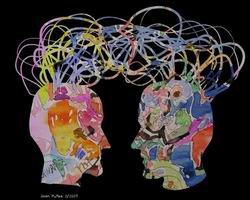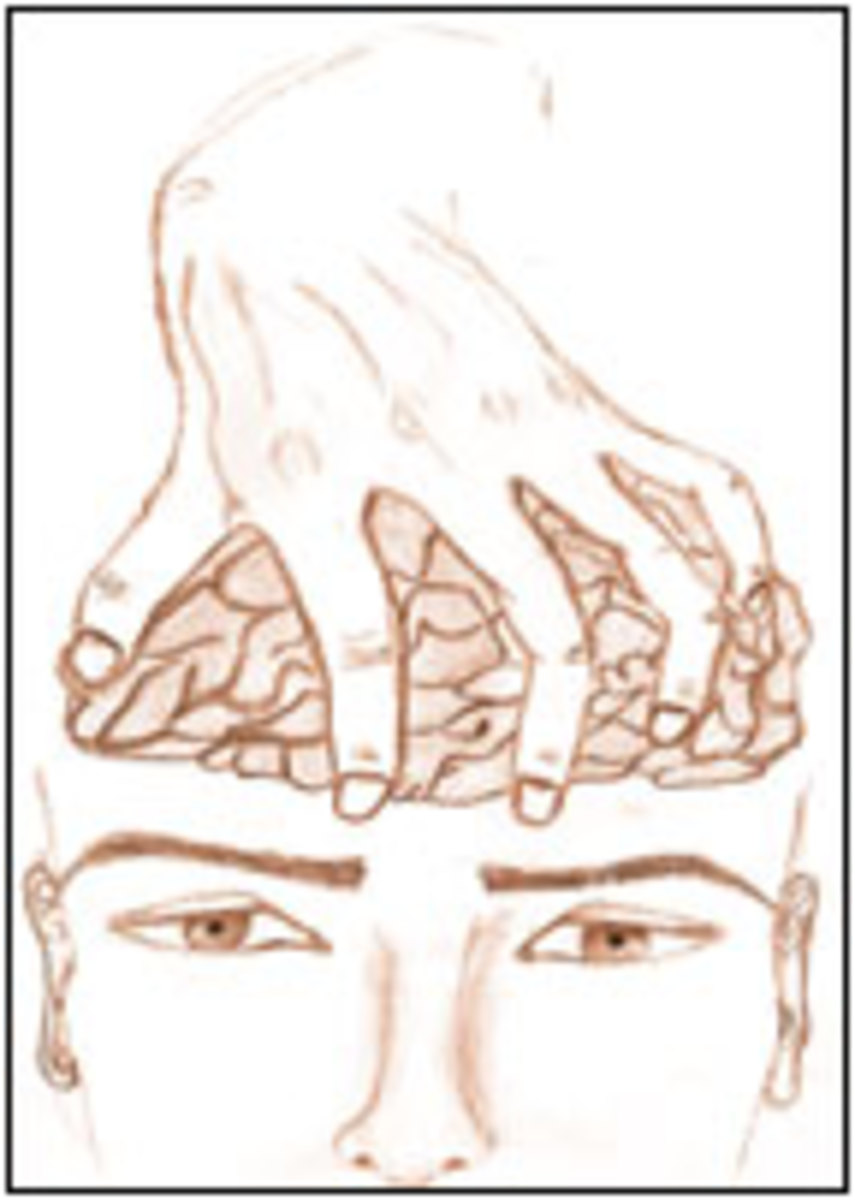Scientists Say Humans Are Capable Of Mind Reading

Can you read the minds of your neighbors, your co-workers, your friends? How about that of your children? Can you read your husband's mind? I won't ask if a man can read his wife's mind because most men live by the rule that there's no logical chain of thinking and processing that leads a woman to a final conclusion. So the resounding answer to this question would probably be a big fat NO!
All kidding aside, neurological research has suggested that all humans are capable of reading the minds of others. In 1996, three neuroscientists made a discovery which has caused quite a stir since. Leonardo Fogassi, Giacomo Rizzolatti, and Vittorio Gallese, all of the University Di Parma, were studying the brain of a macaque monkey when they “came across a curious cluster of cells” in the premotor cortex. This area of the brain is responsible for planning movements.
They observed that the cluster of cells not only fired when the monkey performed an action, but also when the monkey observed the very same action being performed by another. The response was the same regardless of whether the monkey was performing the action or whether he merely watched another, either human or monkey, perform an identical action. The neuroscientists named the cells “mirror neurons” because of their nature to reflect the actions of others observed by the monkey.
Later experiments proved that humans also have such mirror neurons. In addition to mirroring actions, these cells also reflected emotions and sensations. Mirror neurons have been implicated in certain mental disorders such as autism, since their discovery. It's believed they may help cognitive scientists to explain how children develop the understanding that others have minds similar to their own. Because this understanding is missing in autistic children, it's hoped that further study will help to shed more light on the disability.
There are two popular theories used to explain how Theory of Mind (the understanding of like minds) develops. The first holds that children are budding social scientists, and that they collect evidence in the form of gestures and expressions. They then link this evidence to their own understanding of people to develop theories for explaining and predicting the thoughts, behaviors and actions of those with whom they come in contact.
The second theory, the simulation theory, states that we are all natural mind readers because we place ourselves in others' “shoes”, using our mind as a model for theirs. Vittorio Gallese says that when humans interact with each other, we create internal representations of their actions, emotions, and even sensations as if it were actually ourselves doing the sensing, feeling, and even moving. He also claims that if the mirror neuron system is damaged or defective, our ability to empathize is lost, leaving the “observe and guess” theory as the only means of determining what others' actions and expressions may mean.
There are some scientists who believe that the answer to autism lies in the study of mirror neurons. They believe there may be a possible deficit or impairment in the mirror neuron systems of autistic individuals. There have been several institutions testing that hypothesis. One such study done by Hugo Theoret at the University of Montreal showed that normally active mirror neurons in the hand movements of non-affected individuals are silent in those afflicted with autism.
- Is Brain Enhancement The Smart Way To Progress?
Is drug-induced brain enhancement an ethical solution to keeping up with intellectual progress? Or is it a quick way to turn healthy adults into patients suffering from a multitude of nervous disorders and other physical symptoms? This article presen - Are We Multi-tasking Our Children Into Attention Deficit Disorder?
Recent studies have indicated that the ability to multi-task is nothing more than a myth. Moreover, it causes low levels of productivity and may be rewiring our brains to process information differently, not allowing for focused critical thinking. Is - When To Screen Your Child For Autism
One out of ever 110 children are affected by autism and the numbers are growing. What are some to the signs your child might be suffering? Read the article to discover if and when you should schedule a screening for your child. - Shaken Baby Syndrome - Manmade Myth
Recent medical research has cast a shadow of doubt that is fast becoming a blanket of darkness over the question of whether Shaken Baby Syndrome is a reality. The syndrome was coined in 1946 by Dr. John Caffey who based his opinions on his own observ
The average human being can sometimes observe mirror neutrons in action without the equipment for brain imaging often used by researchers. An example would be when we copy someone's actions, like yawning, or when we unconsciously adopt their posture or facial expressions. What's actually taking place is that our brain reacts to the observance of these things in others. Neurons in the premotor area activate the actual motor cortex. Someone is more likely to mimic behavior he sees, if he gives a greater amount of attention to that particular behavior.
While the first discovery of the existence of mirror neurons and their observed properties may not give an indication of humans being able to read minds, in the classic sense, later research has laid the foundation for researching in many directions. A review paper by Adele Diamond suggests that what's truly important is that the feature of the premotor cortex region is responsible for associating those things which are not physically connected.
Newer findings demonstrate that mirror neurons are located in many more areas of the human brain than previously believed. There have been numerous reports published in which neuro-scientists give evidence that mirror neurons are not only activated by watching actions, but also by reading about then and hearing them. There are indications that the neurons might be activated by language. One study has shown mirror neurons responding to sound. An example would be the same neurons fired when a person bites down on something crunchy as when they merely heard someone else do the same thing.
A neuro-scientist at the University College London, Simone Schutz-Bosbach, claims that research is beginning to show the relationship between sensing and doing. “A network of mirror neurons plays a role in the capacity to learn through imitation, use semantics in language, and feel empathy.” She says that an understanding of others' actions is the key function in communication, and that it probably helps us to understand the what and why of others' actions, as well as forming ideas about what will be their next action.
Do these new findings mean that I could stand across the room from a perfect stranger and be privy to his inner most private thoughts? Not likely. However, they do serve to explain why certain moods, and behaviors seem to “rub off” on others. Ever hear someone say “the tension in the room was so thick you could cut it with a knife?” Very often when we're surrounded by certain activities, moods, etc. we seem to become affected in the same manner. It seems there is a physical reason for the phenomenon.
If you found this information helpful, please pass it on by clicking the Tweet, Like, or +1 button provided at the top of the page.







